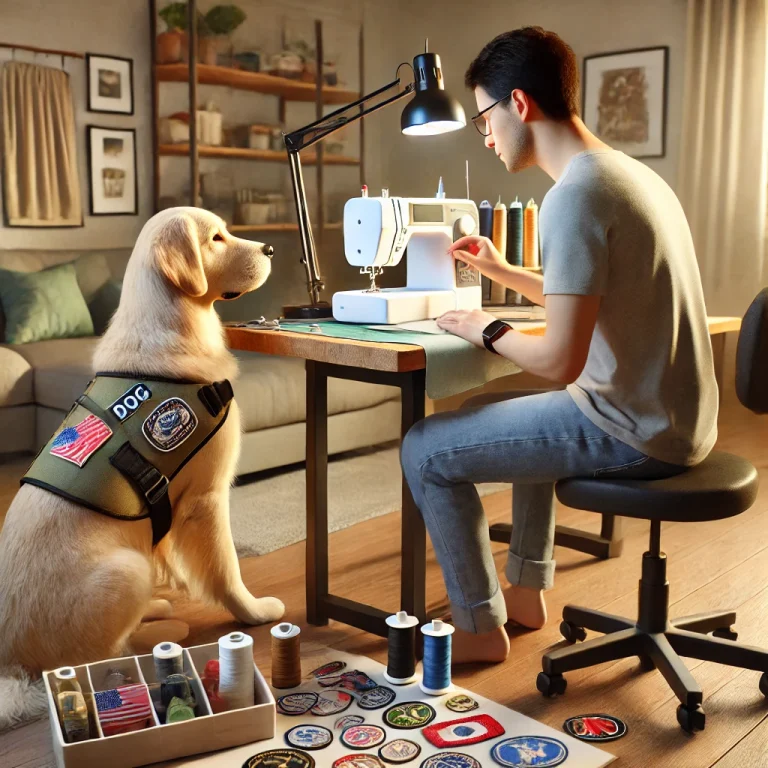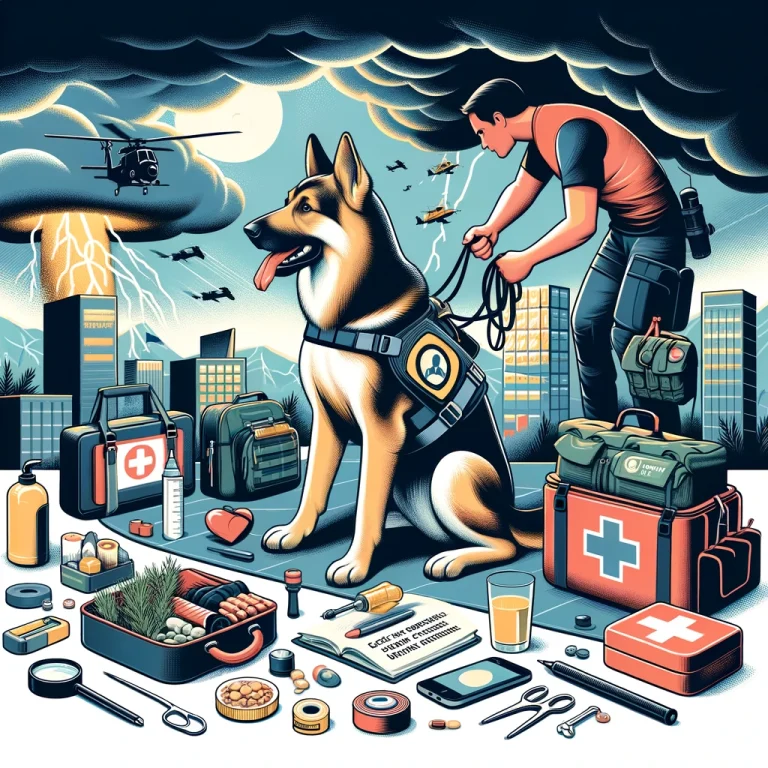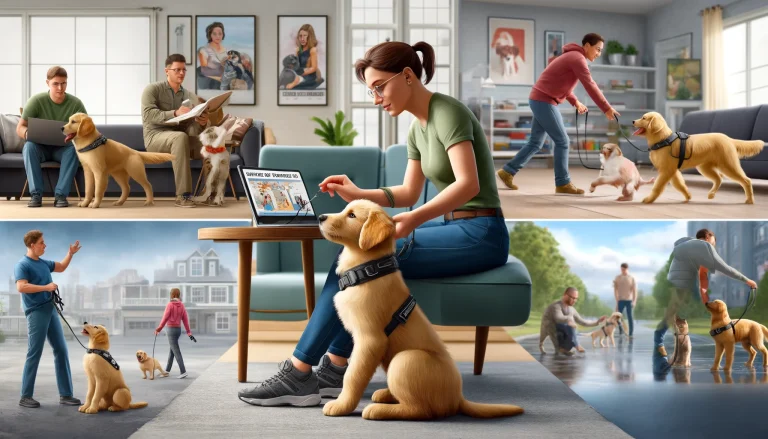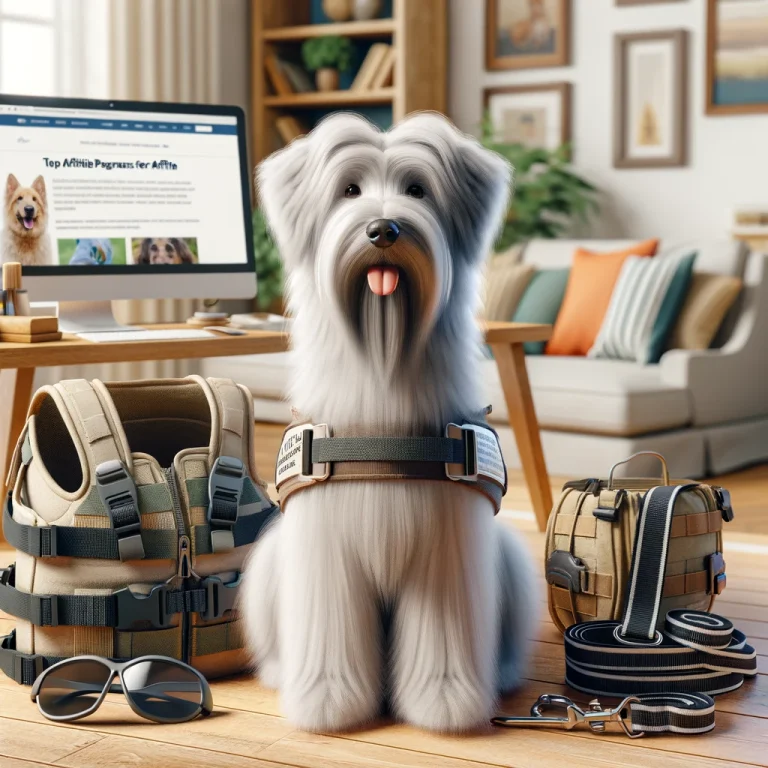Introduction
Training your service dog can be one of the most rewarding experiences for both you and your furry companion. Whether you need assistance with mobility, medical alerts, or emotional support, this ultimate guide to DIY service dog training provides practical tips, essential commands, and proven training techniques that will help you and your dog form an unbreakable bond while fulfilling crucial support roles. Best of all, you don’t need to hire a trainer or pay for expensive programs to achieve results. This guide will help you gain confidence and create a lasting partnership.
Promise to Reader:
By following this comprehensive guide, you’ll learn how to effectively train your own service dog, ensuring a more affordable and deeply personal training experience. Plus, we’ll introduce you to the best resources and products to support your journey.
Why DIY Service Dog Training?
Training your own service dog can save you thousands of dollars compared to traditional training programs. More importantly, DIY training ensures that your service dog is fully tailored to your unique needs. You control the pace, the training methods, and the specific service dog commands required for your daily support.
Benefits of DIY Service Dog Training:
- Affordability: Save on expensive programs.
- Personalization: Customize the training to fit your lifestyle.
- Stronger Bond: Build a deeper connection with your service dog.
- Flexibility: Train at your own pace.
Getting Started with DIY Service Dog Training
Before jumping into training techniques, it’s important to understand what kind of tasks your service dog will perform and how to best accommodate their learning style.
Assess Your Dog’s Suitability
Not every dog is cut out to be a service dog, so begin by assessing your dog’s temperament and capabilities. A service dog should be:
- Calm and Focused: Able to handle stressful environments.
- Confident: Not easily startled or distracted.
- Intelligent: Quick to learn new commands and skills.
- Responsive: Willing to work closely with their handler.
The Essentials for Training Success
- A Quiet Training Space: Minimize distractions to help your dog focus.
- High-Value Rewards: Treats, toys, and praise that motivate your dog.
- Consistent Schedule: Short, frequent training sessions work best.
- Positive Reinforcement: Reward good behavior immediately.
Key Commands and Skills for Every Service Dog
When it comes to service dog commands, consistency and clarity are crucial. Here’s a list of essential commands every service dog should know, along with the best ways to train them:
1. Sit and Stay
Purpose: Helps your dog remain in a controlled position.
Training Technique:
- Start with a treat in your hand.
- Guide the treat over the dog’s nose, prompting them to sit.
- Once seated, say “sit” and reward.
- Gradually increase the “stay” duration before giving the reward.
2. Heel
Purpose: Ensures your dog walks calmly beside you.
Training Technique:
- Hold a treat at your side and give the “heel” command.
- Take a few steps forward, keeping your dog close.
- If your dog pulls away, stop walking and wait for them to return to your side.
- Praise and reward when they walk beside you.
3. Alert
Purpose: Alerts you to medical conditions or emergencies.
Training Technique:
- Train your dog to recognize specific signals (like a blood sugar monitor sound).
- When the dog notices the signal, reward them immediately.
- Associate the signal with the “alert” command over time.
4. Retrieve
Purpose: Helps with picking up and delivering items.
Training Technique:
- Start by teaching your dog to pick up toys or small objects.
- Use the “fetch” command to get them to grab the item.
- Once they master this, introduce different objects for them to retrieve.
5. Deep Pressure Therapy (DPT)
Purpose: Provides emotional support through calming pressure.
Training Technique:
- Invite your dog onto your lap or beside you.
- Encourage them to apply gentle pressure with their body.
- Reward them for maintaining the pressure for increasing periods.
6. Bracing and Mobility Assistance
Purpose: Supports mobility and balance.
Training Technique:
- Start with a secure harness.
- Use the “brace” command while the dog maintains a steady stance.
- Practice putting gentle weight on the harness.
Advanced Training Techniques and Tips
After mastering the basics, you can advance your dog’s training by integrating these training techniques:
Task Chains and Sequencing
Combine multiple commands into a seamless sequence that makes your service dog’s tasks more efficient. For instance, alerting to a medical condition can lead to fetching medication.
Distraction Training
Teach your dog to maintain focus in crowded or noisy environments. Start with mild distractions and gradually increase the level of difficulty.
Public Access Training
Ensure your dog behaves well in public settings. Practice in various environments like parks, stores, and public transportation, rewarding good behavior consistently.
Legal Rights and Responsibilities
Training your own service dog comes with legal rights and responsibilities:
- ADA Compliance: Ensure your dog meets the ADA definition of a service animal.
- Public Access Rights: Service dogs can accompany you to public places.
- Identification: While not required, service dog gear like vests can help identify your dog.
Support from Professional Organizations
If you’re feeling overwhelmed or want additional guidance, consider reaching out to organizations specializing in DIY service dog training programs. They provide self-training courses that you can access through ServiceDogOwners.com.
The Importance of Pet Insurance and Service Dog Products
Ensuring the well-being of your service dog is crucial, especially considering the rigorous training they undergo. Comprehensive pet insurance can protect against unexpected medical expenses, while high-quality service dog gear and products like harnesses, training tools, and grooming kits can improve their performance and comfort.
Conclusion
Training your service dog may seem daunting, but this ultimate guide to DIY service dog training tips should empower you to start this journey with confidence. By following the steps outlined above, you’ll be well on your way to creating a lasting and fulfilling partnership with your service dog.
Need help self-training a Service Dog or an Emotional Support Dog? Click Here for assistance.






